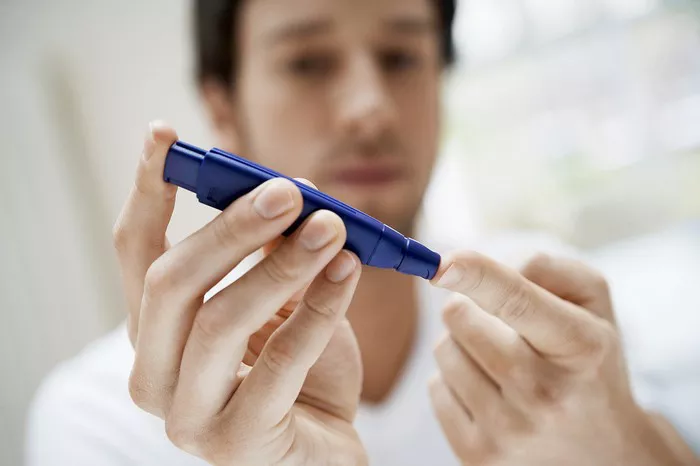Diabetes mellitus is a chronic metabolic disorder characterized by elevated blood glucose levels due to insulin deficiency or resistance. Type 1 diabetes (T1D) and type 2 diabetes (T2D) are the two primary forms of diabetes, each with distinct etiologies, pathophysiology, and management strategies. In this comprehensive article, we delve into the complexities of T1D and T2D, compare their severity, and discuss the implications for individuals, healthcare providers, and society.
1. Understanding Type 1 Diabetes:
Type 1 diabetes, formerly known as insulin-dependent or juvenile diabetes, is an autoimmune condition characterized by the destruction of insulin-producing beta cells in the pancreas. This autoimmune attack is mediated by the body’s immune system, resulting in an absolute insulin deficiency and dysregulation of blood glucose levels. T1D typically presents in childhood or adolescence, although it can occur at any age.
The onset of T1D is often abrupt, with symptoms such as excessive thirst, frequent urination, unexplained weight loss, fatigue, and blurred vision. Without insulin therapy, individuals with T1D are at risk of developing diabetic ketoacidosis (DKA), a life-threatening condition characterized by severe hyperglycemia, dehydration, and metabolic acidosis.
Management of T1D requires lifelong insulin therapy, blood glucose monitoring, carbohydrate counting, and lifestyle modifications. Despite advancements in treatment modalities, individuals with T1D face challenges such as hypoglycemia, hyperglycemia, and the risk of long-term complications, including cardiovascular disease, kidney disease, neuropathy, and retinopathy.
2. Exploring Type 2 Diabetes:
Type 2 diabetes, formerly known as non-insulin-dependent or adult-onset diabetes, is a metabolic disorder characterized by insulin resistance and relative insulin deficiency. Insulin resistance refers to reduced sensitivity of peripheral tissues (such as muscle, liver, and adipose tissue) to the action of insulin, leading to impaired glucose uptake and utilization. Over time, pancreatic beta cells may fail to compensate for insulin resistance, resulting in decreased insulin secretion and hyperglycemia.
T2D is strongly associated with modifiable risk factors such as obesity, sedentary lifestyle, unhealthy dietary habits, and genetic predisposition. It typically develops in adulthood, although the prevalence of T2D in children and adolescents is increasing due to rising rates of obesity and sedentary behavior.
The onset of T2D is often insidious, with symptoms such as fatigue, increased thirst, frequent urination, blurred vision, and slow wound healing. Many individuals with T2D may remain asymptomatic for years, leading to delayed diagnosis and increased risk of complications.
Management of T2D focuses on lifestyle modifications, including weight loss, dietary changes, regular exercise, and smoking cessation. Pharmacological interventions such as oral antidiabetic medications, injectable therapies, and insulin therapy may be prescribed to improve glycemic control. However, T2D management is often challenging due to progressive nature, comorbidities, and individual variability in treatment response.
3. Comparing Severity:
Determining the severity of T1D versus T2D is complex and multifaceted, as it depends on various factors, including age of onset, rate of progression, presence of complications, treatment responsiveness, and individual circumstances. Both T1D and T2D are associated with acute and chronic complications that can significantly impact quality of life and life expectancy if not effectively managed.
T1D is often considered more severe in the acute phase due to the risk of DKA and the immediate need for exogenous insulin therapy. Without insulin, individuals with T1D cannot survive, highlighting the critical nature of insulin replacement therapy for maintaining life.
However, T2D is often considered more severe in the long term due to its progressive nature, higher prevalence of complications, and greater burden on healthcare systems. Individuals with T2D are at increased risk of cardiovascular disease, stroke, kidney disease, neuropathy, retinopathy, and other macrovascular and microvascular complications.
Furthermore, T2D is more prevalent worldwide and accounts for the majority of diabetes-related morbidity, mortality, and healthcare expenditures. The global burden of T2D is projected to escalate in the coming decades due to population aging, urbanization, unhealthy lifestyle habits, and the obesity epidemic.
4. Implications for Healthcare and Society:
The management of both T1D and T2D requires a multidisciplinary approach involving healthcare providers, educators, dietitians, psychologists, and other allied health professionals. Early diagnosis, comprehensive education, individualized treatment plans, and ongoing support are essential for optimizing outcomes and reducing the risk of complications.
From a public health perspective, addressing the underlying determinants of T1D and T2D, such as obesity, sedentary lifestyle, unhealthy dietary habits, and socioeconomic disparities, is crucial for prevention and control efforts. Promoting healthy behaviors, creating supportive environments, and implementing policy interventions can help reduce the incidence and prevalence of both forms of diabetes and mitigate their impact on individuals, families, and society.
5. Conclusion:
In conclusion, both type 1 diabetes and type 2 diabetes are serious chronic conditions that require lifelong management and support. While T1D is characterized by absolute insulin deficiency and autoimmune destruction of beta cells, T2D is characterized by insulin resistance, relative insulin deficiency, and metabolic dysfunction.
The severity of T1D versus T2D depends on various factors, including the acute versus chronic nature of the condition, the presence of complications, and individual response to treatment. Both forms of diabetes pose significant challenges to individuals, healthcare systems, and society at large, underscoring the importance of prevention, early intervention, and comprehensive management approaches.
By raising awareness, promoting healthy lifestyles, and advocating for access to quality care, we can work together to improve outcomes, enhance quality of life, and reduce the burden of diabetes for individuals worldwide.



























